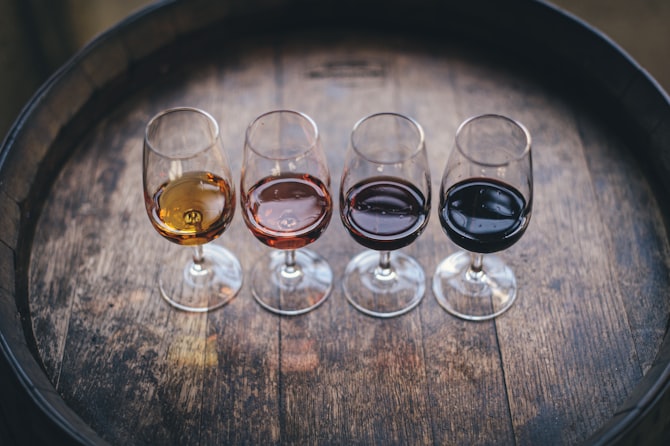Från Austrian Wine Marketing Board kom ett pressmeddelande förra veckan om skörden 2013. Informationen från de österrikiska odlarna är alltid spännande läsning för vinvänner då vi presenteras fakta på ett strålande bra sätt. Texten är på engelska men vi hoppas att det är okej "The 2013 Vintage – Austrian Wine Exactly As We Want It".
At close to 2.4 million hectolitres, the total volume of the current Austrian vintage is just under the 5-year average, even though the main variety, Grüner Veltliner, had suffered from coulure damage due to bad weather during the flowering period.
Despite the challenging weather conditions, all of the wine regions – through fine-tuned vineyard management and carefully selected harvest dates – have delivered very high-quality white wines. Also Austrian red wines have exceeded initial expectations, yielding more than satisfying results.
Cold and warm; wet and dry
While not extreme, the Winter was colder than usual and, with high amounts of snow as well as sufficient rain, bestowed plenty of moisture to the soils – which ultimately turned out to be a blessing. The low temperatures in March and April resulted in a significant bud break delay and flowering that was even later than in the two previous years.
In June, the wet, cold weather was followed by a first heat wave that strongly impaired pollination of the main variety, Grüner Veltliner. But these coulure damages differed significantly from region to region. For example, losses were notable in western Wachau, big areas of the Kremstal and Kamptal and, especially in northern Weinviertel and Wien (Vienna), yet in the Wagram, they were sporadic.
Immediately after immense floodings that occurred in June, extreme summer heat set in, bringing with it a series of never ending hot days through July and August. This made the Summer of 2013 one of the five hottest in 100 years. In fact, August's drought-like conditions brought the vegetation process nearly to a halt; young vineyards in particular were affected. Fortunately - as mentioned before - the soils were very moist. Additionally, as September came, so did some rain.
Conditions in September and October were very balanced, though night temperatures were somehow cooler than in previous years. The grapes ripened on a steady, continuous basis, and the desired sugar gradations were achieved gradually. As the occurrence of botrytis was low, nearly all harvested grapes were healthy.
For the sweet wine segment, it was a matter of wait and see. Ice wines were able to be made, but from grapes that could be harvested only during a brief period in December. The overall sweet wine harvest was, in terms of quantity, very low.
Explosive Veltliners; racy Rieslings
The coulure problems earlier in the season led to the formation of tiny, extra-sweet seedless grapes - known as Jungfernbeeren, or “maiden berries” - on the Grüner Veltliner vines. These contributed to very dense Veltliners with deep fruit, a broad range of aromas and flavours and a perfectly balanced acidity structure.
Even the lighter variations of Austria's leading variety are very pointed and elegant. But also the range of premium wines features many “green giants” with great ageing potential because of their wonderfully harmonious structure.
The Riesling harvest period tested the nerves of the vintners. The required sugar content of the grapes was achieved relatively late in the season. Plus, many grapes were falling off the vines at the end of October, which led to a reduced yield in general.
Following their vinification, the Rieslings from 2013 began to show their demanding and exuberant stone fruit character. The high acidity levels in some regions made acid corrections necessary, but this helped to ensure good storability.
Sauvignon Blanc, especially from the Steiermark, is delivering very concise, focused wines with an optimal balance of peppered spiciness and deep berry fruit. Many of these are reflecting a similarity to the very good 2012 wines. Gelber Muskateller, however, is showing more of a restrained “grapiness” in its 2013 versions.
Wines from other white grape varieties, such as Weissburgunder, Chardonnay and the rare Rotgipfler and Zierfandler, will likely deliver wines of good and very good qualities. Particularly noteworthy is the rarity Roter Veltliner, which is presenting very intense, fruit accented wines from the Wagram region and even beyond.
Reds with charm and pizzazz
Throughout the red wine strongholds in Burgenland and Niederösterreich (Lower Austria), yet another good vintage is becoming apparent – the fourth in five years – despite initial skepticism. Although these 2013 red wines will not quite match those from the top vintages of 2011 and 2012 in terms of ripeness and fullness, will they indeed score points with their red berry fruit and precocious charm.
In general, red wines with moderate to good density and soft tannins can be expected. They reflect a pleasant raciness and fine structure as well. And this applies not only to Austria's showcase red varieties, Blaufränkisch and Zweigelt, but also to the capricious Pinot Noir and St. Laurent.
From the Bordeaux varieties, Merlot should be a bit easier in expression – due to its higher ripeness – than Cabernet Sauvignon. All in all, the red wines from 2013 outperform those from vintages such as 2010 and 2005 – and likely 2008 as well – and in a few years could prove to represent a “softer version” of 2007.
“After the two highly ripe vintages of 2011 and 2012, which delivered monumental red and white wines, the 2013 vintage almost perfectly represents the “Austrian ideal” of freshness, raciness and animated drinkability,” states Willi Klinger, Managing Director of the Austrian Wine Marketing Board.
“Crisp acidity and robust structure characterizes the wines in the classic medium-bodied range. In the Reserve range, those vintners who risked a late harvest picking were rewarded with great wines backed by density and expressiveness – wines that are possible only because of dramatic weather conditions. Also in 2013, very good noble sweet wines have been vinified as well.”












